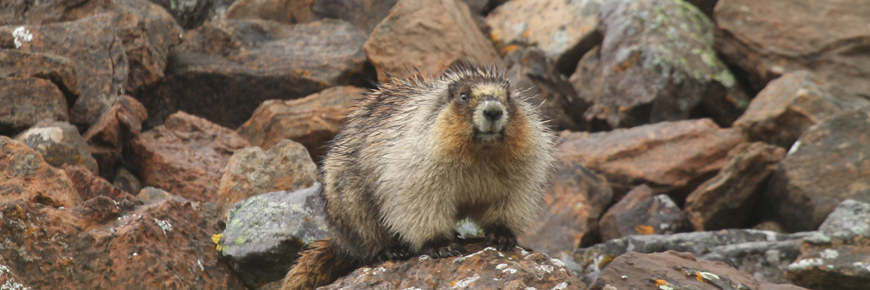
Small mammals
Kootenay National Park
There are 29 species of small mammals in Kootenay. They range in size from the pygmy shrew, which weighs only a few grams, to the beaver, which can weigh up to 20 kilograms. Except for shrews, bats and rabbits, these animals are all rodents.
Columbian ground squirrel | Golden-mantled ground squirrel | Chipmunk | Hoary marmot | Porcupine | Beaver | Little brown bat | Snowshoe hare | Pika
Columbian ground squirrel
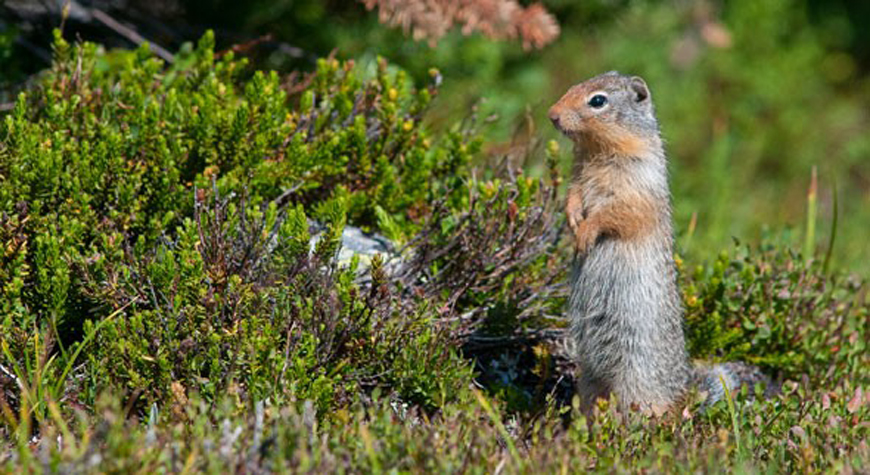
Columbian ground squirrels are the most regularly spotted animal in the park during the summer. They enjoy their sleep and hibernate for up to seven months. When they are awake, they are important prey for grizzly bears, coyotes, wolves and golden eagles.
Golden-mantled ground squirrel

Golden mantled ground squirrels have a tawny to reddish "mantle" across their shoulders and a black-bordered white stripe down each side of their backs. They are omnivores, feeding on almost anything they can get a hold of, from seeds to fungi, herbs and shrubs, insects and even eggs or carrion. You can see them darting in and out of their burrows throughout the park.
Chipmunk
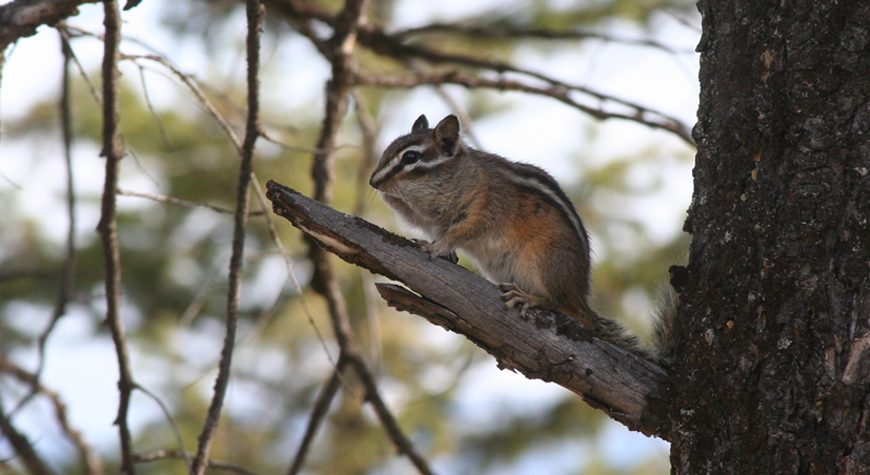
Chipmunks get their name from the genus “Tamias” which is Greek for "steward". They play a big role as stewards in our National Parks by collecting and dispersing seeds! They are small and striped.
Hoary marmot
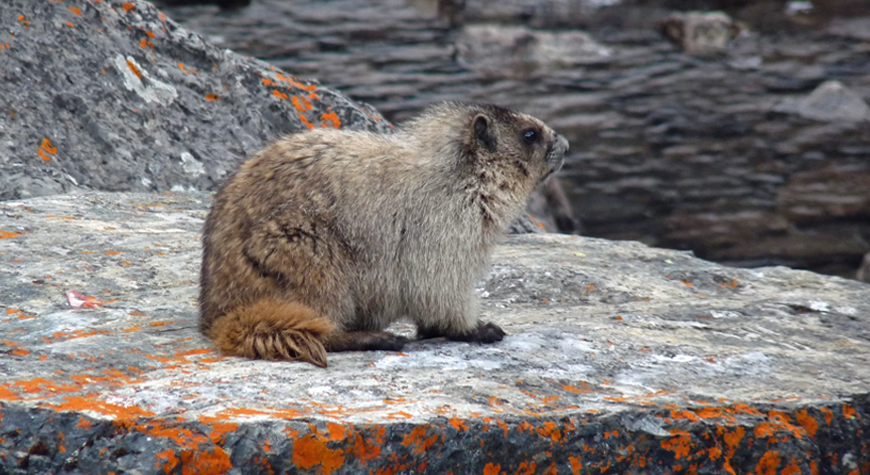
Hoary marmots are colonial animals that live near or above treeline. One of the largest rodents in the park, marmots can weigh up to 12 kilograms. Marmots can be seen on a number of day hikes in the park, including our guided hikes to the Burgess Shale.
Porcupine

Porcupines are common in subalpine forests throughout the park. Like other rodents, porcupines chew bones and antlers to gain minerals. Keep an eye on your backpacks and boots when camping in the backcountry - porcupines love the salty residue on things that humans have touched and are known to nibble!
Beaver

The beaver is the largest rodent in the park and usually hard at work in valley-bottom streams and ponds building lodges and practically indestructible dams out of sticks, stones, and mud. These wide-tailed toothy fellows eat the rich, pulpy cambium layer of tree bark. Their favourite flavour? Aspen.
Little Brown Bat
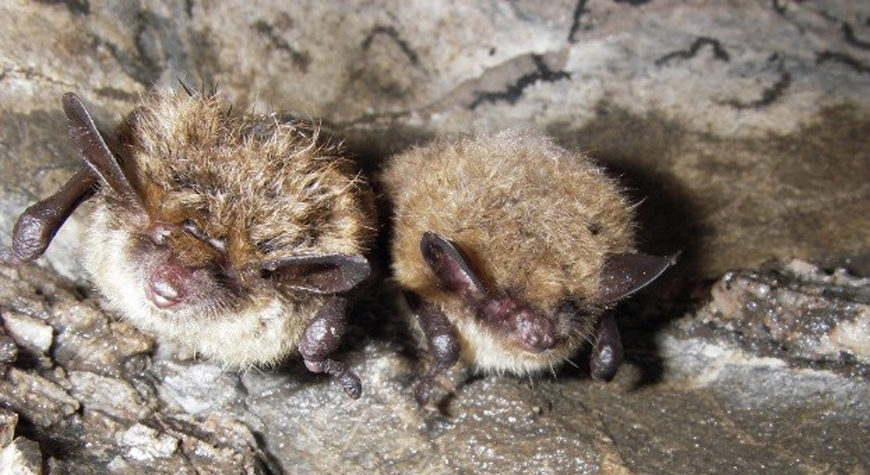
The Little Brown Bat is one of seven bats found in Yoho National Park. It can eat half its weight in insects per night, including mosquitos, midges and mayflies. Like other bats, it helps keep forest insect populations in check!
Snowshoe Hare
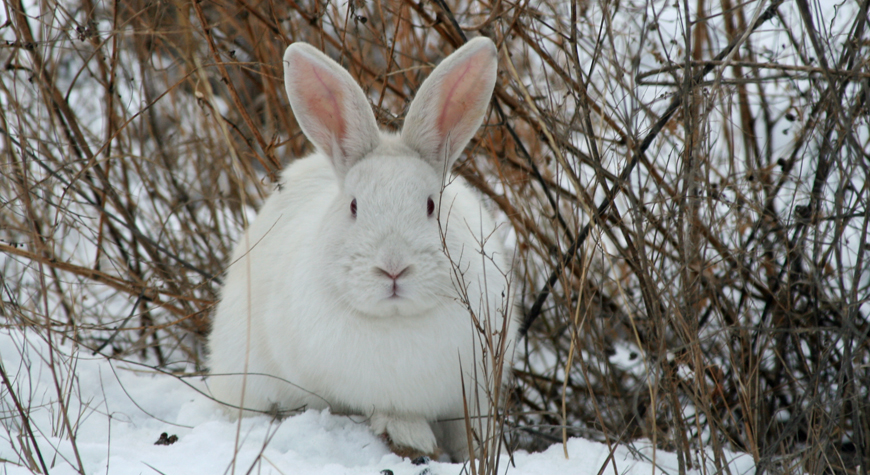
Snowshoe hares get their name from their feet which act as snowshoes, preventing them from sinking into the snow when they hop and walk. They are well camouflaged and can be hard to spot because their fur turns white in winter and brown in summer. Their distinctive track patterns are easy to spot and follow in winter.
Pika
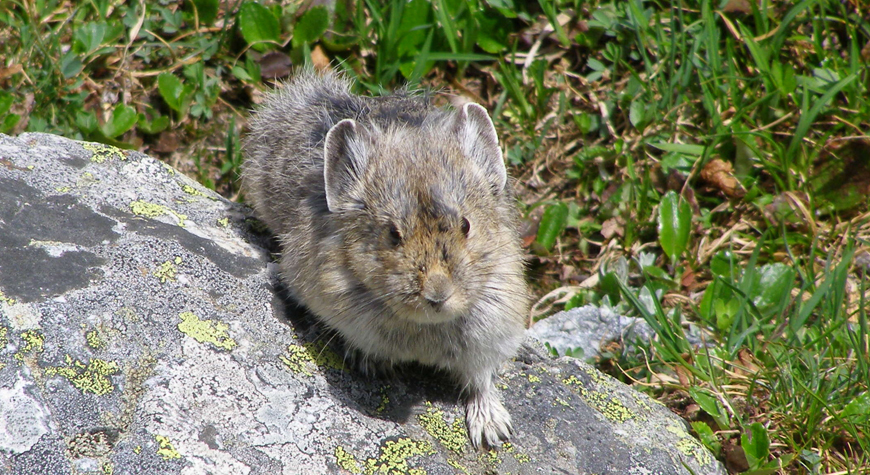
Pika or "rock rabbits" are the smallest member of the rabbit family. Pikas live in alpine talus slopes. Although well camouflaged and sometimes hard to see, their distinctive and high pitched call can often be heard - “peeeeeek”!
Related links
- Date modified :